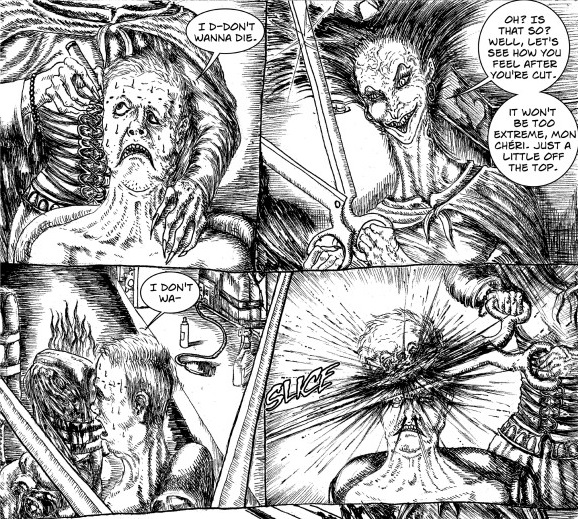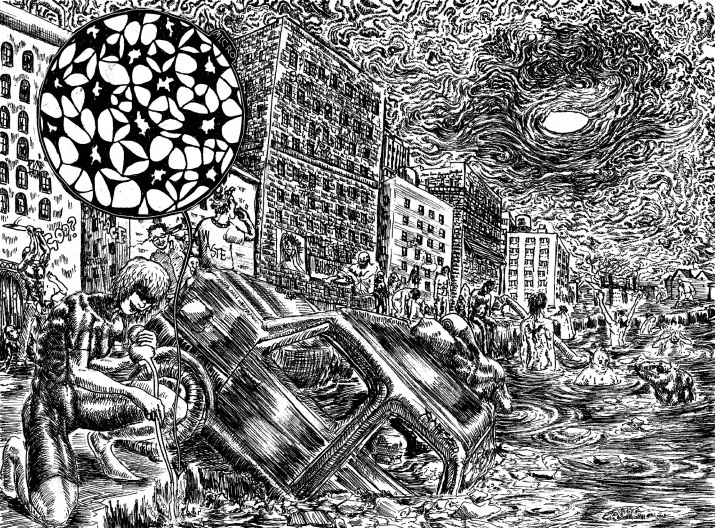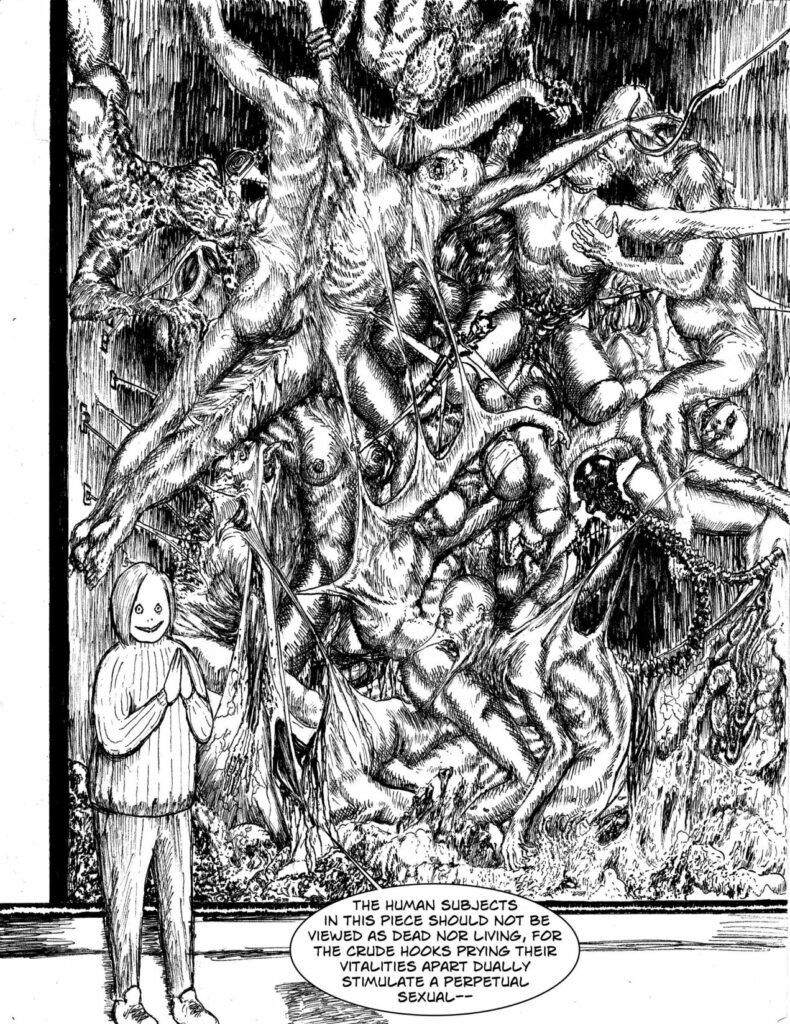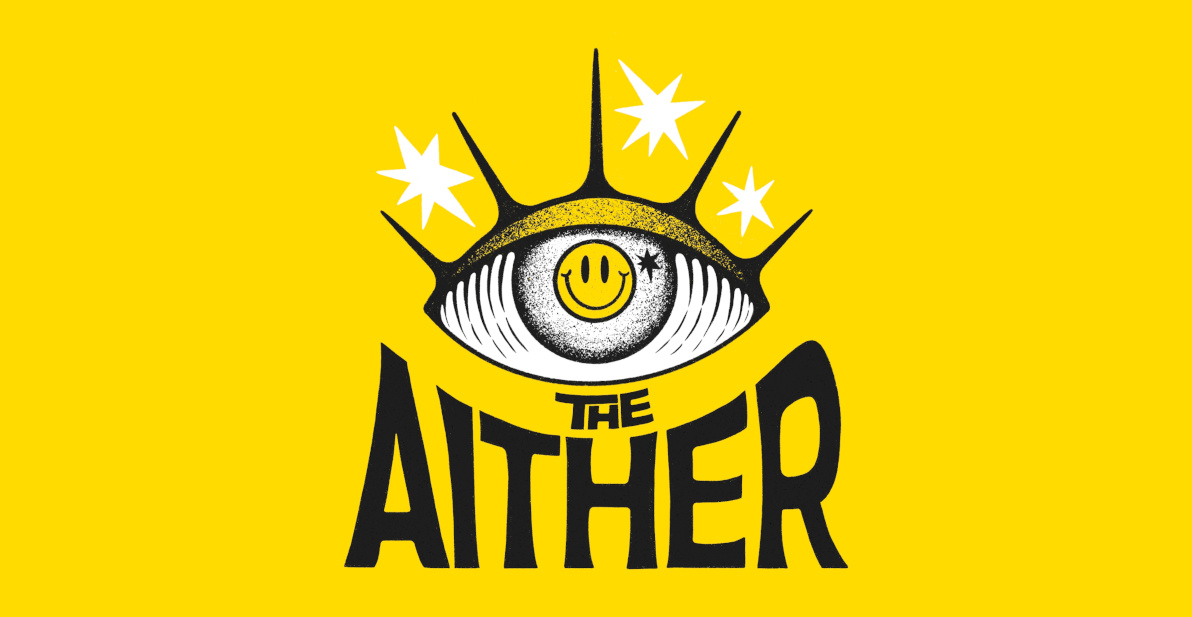- Title: ‘Vitiators’
- Art: Charles N. aka Stretched Skin
- Writing: Elytron Frass
- Publisher: Expat Press
- Date of Release: 2022
- Number of Pages: 250 pages.
- Format: Colour covers, with black & white interior pages.
- Paper: 8″×11″
- Release Price: US$5 Digital + US$16 Physical
A metaphysical nightmare, Vitiators, a new comic from artist Charles N. aka Stretched Skin and anonymous writer Elytron Frass is an exercise in purposefully pushing the boundaries of violence and depravity. The comic is meant to offend and shock, knowing this is an absolute before approaching the material for yourself
Thematically and visually Vitiators is comparable to the most (in)famous names in Japanese erotic grotesque and extreme horror comics, of which the book draws obvious inspiration – Bringing to mind the unapologetic cruelty of Suehiro Maruo, the warped sexual contortions of Shintaro Kago, the griminess of the landscapes of Hideshi Hino, and the metaphysical madness of Junji Ito.

It must be said that the story within Vititaros is not as essential to the experience as the art and world building – The rough framework of which revolves around a mangaka aka Japanese comic book artist whose recent works have caused outrage among fans, and his response to this, is to drown his work in excess, as a sort of revolt against the medium.
Largely, the reader will spend time in a world of debauchery, crafted by this disgruntled mangaka, where all manner of human atrocity has become normalized. There are some recurring characters and themes, specifically an entity known as the ‘orphanmaker’, yet the journey is abstract and feels more akin to a dream than a coherent narrative – Which the book does with great skill.
The artwork of Charles N. is grimy chaos and every page of the book is flooded with a perverse excessiveness that is a kick to the gut – A complete sensory overload with corpses piled high (the dead are the lucky ones in this world.) Existing like a series of mad scribbles done in excess to a background tune of industrial noise – such as Merzbow, Masonna & Whitehouse; with some Skinny Puppy to lighten the mood.

Vitiators is, admittedly, rather unsettling at points as it presents a world of extreme decline – As if you are witnessing the last days of mankind, where life has lost all meaning; and only hate and depraved carnal desires remain.
The story may be abstract, but there are moments of dialogue and world building in Vitiators that are an equal affront to the senses as the art. Such as the creation of the “Orhpanmaker” and its subsequent evolution, traversing childhood violence in a tragic and disturbing fashion.
Certainly, there are elements of a traditional story, and even briefly lived characters will uncomfortably lodge themselves in the readers’ conscience for some time afterwards. Furthermore, the elements of third wall breaking, though abstract, are relatively easy to follow; and the conclusion of the book, despite coming with a sharp narrative switch, is the perfect send-off to what came before it.

It must be said that the two creators work together brilliantly, helping to push Vitiators past the initial reaction of violence just for the sake of shock – though that is still a component of the work. The extreme nature of the work never feels meaningless, despite the value of life being portrayed as such. It does take a while to build to that point, and the readers’ initial reaction may be that of the easily attached label of “edgelord”; but as the story progresses it becomes apparent that there is a depth to the work which makes it a unique and a well thought-out entry into extreme art.
Thematically, Vitiators could be said to reflect the 20th Century art movement of Futurism, bringing to mind the famous quote from Futurist founder F. T. Marinetti (1876 to 1944), “Art, in fact, can be nothing but violence, cruelty, and injustice.”
The crux of whether someone enjoys the work is bound to rest in how much that sentiment resonates with the reader.
Essentially, if you find art movements like the Auto-Perforations-Artistik aka Auto Perforation Artistry, or the Grand Guignol theatre as being essential in pushing boundaries towards deeper human understanding, or find beauty in a dance like Butoh which is meant to convey suffering; will help indicate if Vitiators is worth your further exploration.

Yes, Vitiators is cruel, nihilistic and arguably mean-spirited, but it does not devalue the importance of exploring those elements of ourselves. Charles N. and Elytron Frass tap into a primordial and chaotic force which is intrinsic to the human experience.
However, that is not to say that the book in itself is a perfect reflection of, or a visceral means to explore such themes.
The book does buckle slightly under its excess.
There is no breathing room here.
The visual direction can be suffocating and the abstract narrative can, at points, feel a bit too involved in shock and trying to impress with grandiose language that can be alienating. However, whilst this is not enough to deter from the overall experience, it does act as a hindrance to fully embracing the work with the same praise afforded to other artists, writers and creatives who have pushed the extreme to such a confrontational level in the space of art.
Undeniably, Vitiators has its challenges both in the content, as well as its execution and to herald this as a perfect project would be disingenuous to this reviewers own personal experience.
Production wise, Expat Press did a wonderful job of bringing the book to print. Further – at a cool US$16 for 250 pages on 8×11 paper, if you have any inkling to check out this title, do so via the physical edition. It is a true joy to hold and the truest way to immerse yourself in the comic’s art, which is, arguably, the comic’s biggest appeal!
If you are willing to be challenged and have a particular interest in extreme art and expression, then you should not hesitate to grab a copy of Vitiators for yourself.
The few faults of the book are easily cancelled out by everything that the book does succeed in.

Links
- Link to Buy ‘Vitiators’ – via Expat Press
- ‘Vitiators’ – GoodReads Entry
- Review of ‘Vitiators’ by Jenny Mugridge – via Grimoire of Horror
- Elytron Frass – Website (via Neutral Spaces)
- Elytron Frass – twitter
- Charles N aka Stretched Skin – Website
- Charles N aka Stretched Skin – twitter
- Charles N aka Stretched Skin – Instagram
- Expat Press – Website
- Expat Press – twitter
- Expat Press – Instagram

![Comic Book Review – ‘Vitiators’ by Elytron Frass & Charles N. aka Stretched Skin [Expat Press, 2022]](https://theaither.com/wp-content/uploads/2022/09/20220914_120112-Med-jpg.webp)
![Book Review – ‘MOIETIES’ by Elytron Frass [Subtle Body Press, 2024]](https://theaither.com/wp-content/uploads/2024/08/Book-Cover-sml-352x264.jpg)
![Film Review – The Mutants & The Cramps @ Napa State Psychiatric Hospital, June 13, 1978 b/w Jason Willis & Mike Plante’s 2021 Doco About The Gig, ‘We Were There to be There’ [Grasshopper Film; 2023]](https://theaither.com/wp-content/uploads/2023/09/Gig-Doco-Double-Bill-Poster-192x264.jpg)
![Music Review – Frozen Planet 1969… ‘s ‘Cold Hand of a Gambling Man’ LP [Pepper Shaker Records, 2020]](https://theaither.com/wp-content/uploads/2020/05/Frozen-Planet-1969-Cold-Hand-of-a-Gambling-Man-LP-Cover-Sml-jpg-264x264.webp)
![Comic Review – ‘Horaman No. 1’ from writer Shayne Armstrong and artist Glenn Manders [Black Bar Comics X Bad Teeth Comics, 2020]](https://theaither.com/wp-content/uploads/2020/04/Horaman-1-Photo-of-Comic-Cover-Med.-jpg-264x264.webp)